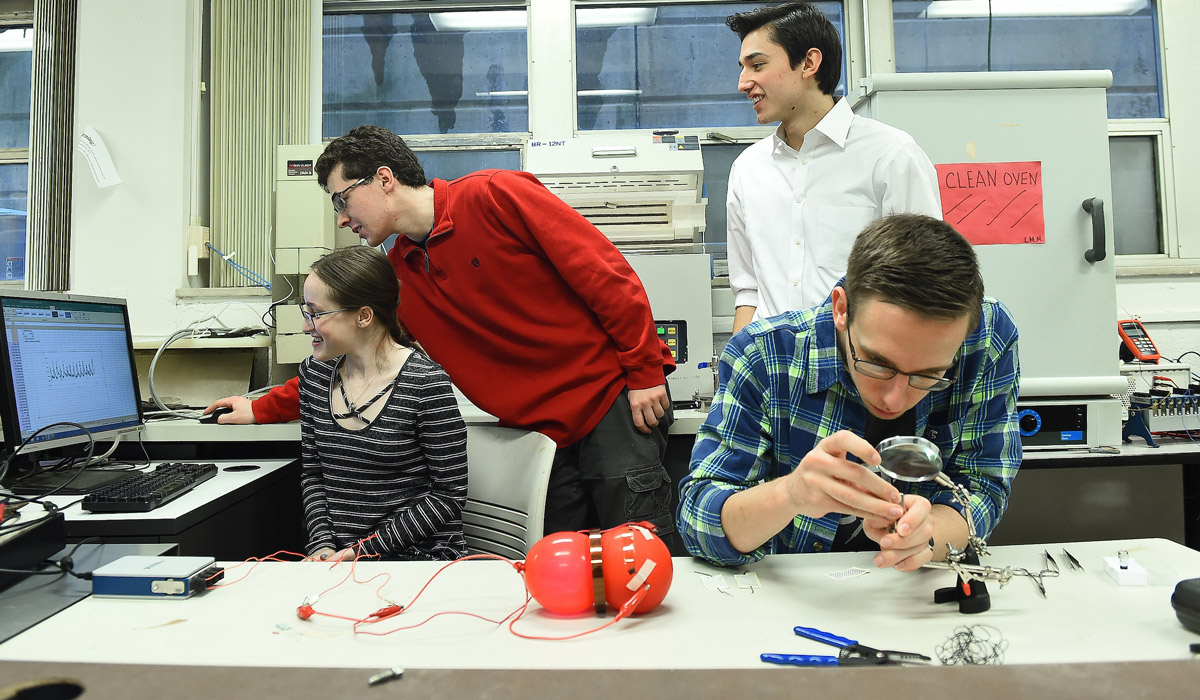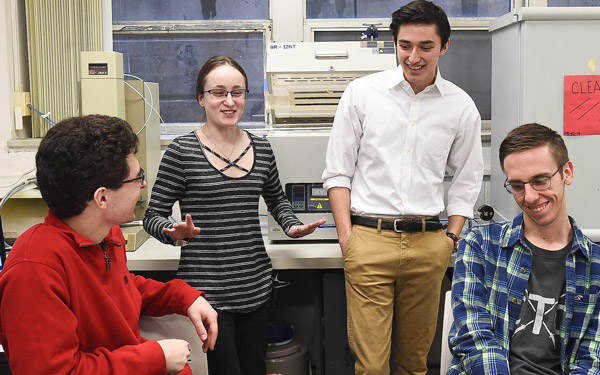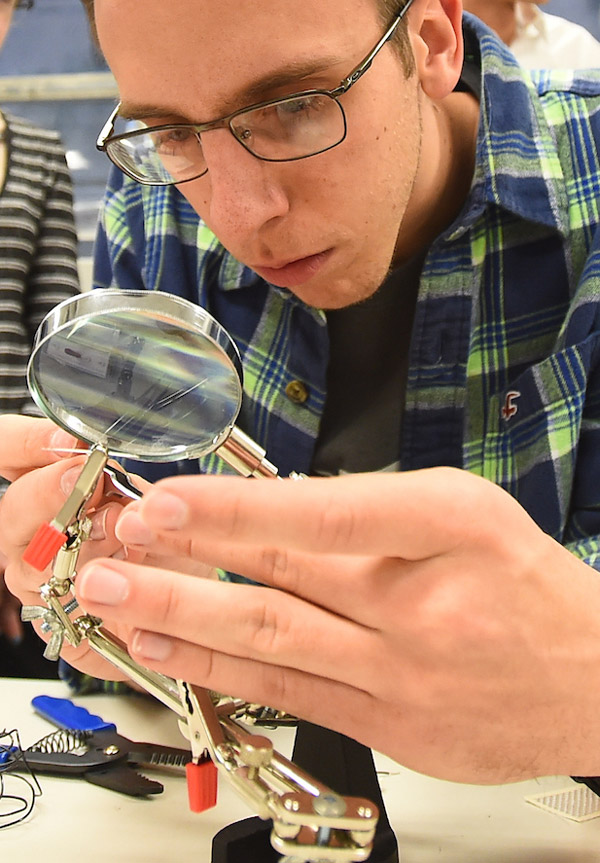

In 2017, The Catholic University of America fielded its first cohort of seven student engineers for the Grand Challenges Scholars Program (GCSP), a National Academy of Engineering (NEA) initiative designed to inspire young engineers to tackle real world problems — like access to clean water and rotting urban infrastructure — through senior-level research projects.
Catholic University is one of fewer than 50 universities with an operational Grand Challenges Scholars Program. Gregory Behrmann, clinical associate professor and director of the program, noted the overlapping missions between the School of Engineering and the GCSP.
“The GCSP aligns with CUA's vision for preparing our students to serve humankind … both aim to prepare students to solve difficult problems and make the world a better place,” he said.

One of Catholic University’s GCSP teams, comprising four students from mechanical engineering and one from computer science, has taken up the challenge to “advance health informatics,” that is, to improve medical care through better collection, management, and use of health data. In layman’s terms — the team has developed a new kind of medical device: a compression sock that takes real-time measurements of the wearer’s vital signs.
“It all started about a year ago,” said mechanical engineering major Jesse Williams. “My grandma called me one morning and was telling me that my dad and his siblings get frustrated when she can’t answer the phone because she lives by herself and they’re afraid that something bad has happened.”
Williams’ grandmother asked him to design an article of clothing that would detect her health levels and send them to her children’s smartphones. The device had to be comfortable, accurate, and because Williams’ grandmother “has a bit of fashion sense,” stylish enough to wear every day. Williams and his teammates took up the challenge, and settled upon a compression sock.
“A sock is one of the most compressive pieces of clothing that everyone is already used to wearing,” said team member and fellow Grand Challenges scholar Andrew Cunningham. “Many elderly people already wear compression socks for circulation and the top of the foot, unlike the wrist, is one of the most accurate places to measure the heart rate."
Cunningham came to the team with previous research experience in smart clothing technology, earned while interning with the Department of Homeland Security. His work targeted another population whose health levels are important to monitor: first responders.
“Right now, all the smart clothing out there really targets athletics … We were looking at how it can be used by firefighters and police officers to monitor their health and identify dangerous situations for the rest of the team,” said Cunningham.
Currently in the early stages of testing their design, the students are using a thin piece of fiberglass woven with something called a carbon nanotube (CNT) to simulate the sock.

Zachary Onorato has been working with CNTs since his freshman year, when a professor invited him to work in his lab. Williams, Cunningham, and Amelia Vignola, the third member of the Grand Challenges program on the team, asked Onorato to work with them based on his experience with the delicate material. Thinner than a piece of human hair, Onorato needs a steady hand and a magnifying glass to thread the CNT through the fiberglass patch.
While current smart technology often uses electrodes to detect pulse, the idea behind the CNT is that it is flexible, using movement to detect change.
“It’s called, ‘piezoresistivity’,” said Onorato, “which means that with a mechanical change, the CNT exhibits an electrical change in resistance.” Basically, when the top of the foot pulses with the beat of the heart, the CNT in the sock flexes almost imperceptibly to the rhythm of the pulse, providing critical information about the wearer’s health status.
Though the students are still in the early stages of testing, if things go well, they may patten the technology and eventually take the product to market.
“If we go there, we need to make sure our technology 100-percent works,” said Cunningham, citing the training he and his teammates have received in ethical engineering over the years. “It really is a big responsibility of engineers to make sure that what they're putting out in the world is safe and reliable, so we make a point that if we wouldn't be comfortable giving this to our own family members, then we wouldn't put it out on the market for other people to use.”
For now, the students are looking forward to unveiling a working prototype at Research Day on April 9. And Williams’ grandmother, who got the scoop on the project at Christmas, is looking forward to seeing its completion, too.
“Oh she’s very excited,” laughed Williams. “Can’t wait to try it on.”
Learn more about the Grand Challenges Scholars Program